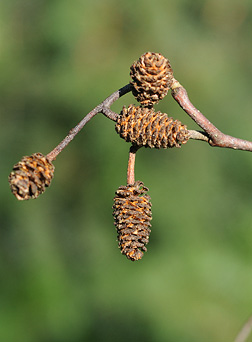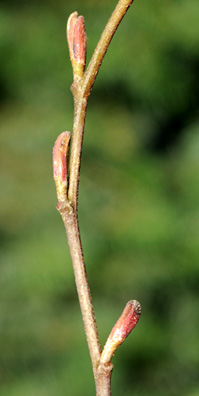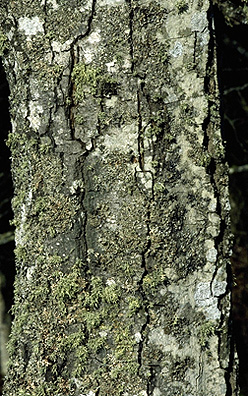white alder Betulaceae Alnus rhombifolia
Leaf:Alternate, simple, deciduous, ovate or oval, 2 to 4 inches long, with finely serrated or doubly serrated margins (not revolute); green to yellow-green above and paler green below. Short (1/2 to 1 inch), grooved petiole. Thicker and more leathery than other alders.
Flower:Species is monoecious but flowers are borne in unisexual aments (catkins); preformed male aments are slender, pendent, and hang in clusters of 2 to 5; female catkins are short and thick, borne at the ends of branchlets.
Fruit:A small semi-woody, brown cone about 1/2 inch long, persists through the winter, seeds are tiny unwinged nutlets, shed in the fall.
Twig:Slender, green turning to red-orange as they mature; stalked buds may be pointed or rounded, overlapping red scales.
Bark:Similar to red alder, outer bark is ashy gray to grayish brown, generally smooth but breaking into flat, irregular plates near the base, increasingly covered with white lichens as it ages.
Form:A moderate-sized tree growing 40 to 80 feet tall and 1 to 2 feet in diameter with a broad, dome-shaped, open crown. Also grows as a large shrub.







Notes: